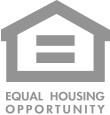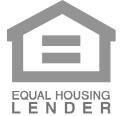As if there weren’t enough contingencies when applying for a home—credit scores, income to debt ratios, interest rates, etc.— a prospective homebuyer is often faced with the question of loan type. For the average homebuyer, there are typically three options: a conventional loan, FHA loan, and VA loan. So what’s the difference?
The answer is significant. And whether you’re buying your first, second, or third home, the differences often blur together and leave people scratching their heads. Here’s a guide to the basic differences between these loans.
Let’s look at the three options.
The Three Loan Types: FHA Loans, Conventional Loans, & VA Loans
The financial landscape is complicated, and loan rates and qualification requirements vary. As we’ve outlined in previous posts, several factors impact the rates of these loans, including external economic factors such as inflation, unemployment, and local markets.
Unless you have a wad of cash the size of your mattress stowed away, most people will likely have to purchase a home through a mortgage. So, becoming familiar with the different options is a great way to approach your mortgage company with the right questions.
The bottom line is that the best type of loan for you is heavily dependent on your particular financial situation and the type of home you are looking to purchase.
#1 The Conventional Loan
Let’s start with the conventional loan, as it is the most often used loan type in the U.S. This type of loan is not backed by the federal government. Instead, the loan is issued by private lenders, including banks and other financial institutions. According to data, conventional loans composed 80% of the newly originated loans in 2021. The underlying stipulation of these loans is that they have stricter requirements. This is because they are not guaranteed or ‘backed’ by the government, which translates into more inherent risk by the lender if the borrower cannot pay.
There are essentially two types of conventional loans: conforming and non-conforming.
- Conforming loan: This type of loan is liable to be purchased by Fannie Mae or Freddie Mac. These government-backed institutions buy mortgages and sell them to investors, but they must not exceed specific amounts set by the Federal Housing Finance Agency.
- Non-conforming loan: This type of loan cannot be purchased by the government-backed giants because it exceeds the limits set by the Federal Housing Finance Agency.
Benefits
Conventionals are accessible. They can be used for the purchase of a primary or secondary home. Other benefits include:
- Lower borrowing costs
- Allows you to cancel Private Mortgage Insurance (PMI) once a certain percentage (20%) equity is reached.
- Allows for a 3% down payment
- Allows sellers to contribute to closing costs
Potential Drawbacks
Of course, conventional loans also come with their set of requirements. Depending on your situation these may or may not apply, but common drawbacks of these loans include:
- A FICO score of 620 or higher
- Requires a slightly higher down payment than some loans
- The debt-to-income ratio cannot exceed 43%
- With a down payment of less than 20%, the borrower needs to pay Private Mortgage Insurance
#2 FHA Loans
In 2021, Federal Housing Administration (FHA) loans made up about 12% of original loans. These loans are insured and issued by an FHA-approved lender. The central draw of these types of loans is that it allows borrowers to have lower credit scores and are designed for people with lower to lower-middle-class incomes.
Benefits:
Federally backed loans have unique benefits that may be appropriate for certain borrowers. These include:
- Mortgage loans that are designed for borrowers with lower credit scores
- These loans require a lower down payment, which opens up the buying pool to those with less money in the back to put down. Down payments can come from gifts from a family member, or a local grant or government program.
- This is an affordable and accessible option for many first-time homebuyers
Potential Drawbacks:
Just like conventional loans, FHA loans also have potential drawbacks that may apply to some borrowers and should be taken into consideration.
- An FHA loan has limits as to how much house you can buy. This limit changes slightly year to year and by location, but in 2021 was set to $356,362.
- With this type of loan, borrowers also have to pay a Private Mortgage Insurance premium that gives the lender added protection. In contrast to the conventional loan, the mortgage insurance premium is paid through the life of the loan unless there is a 10% down payment. In the case of a 10% down payment, the borrower pays mortgage insurance for 11 years.
- This loan requires a debt-to-income ratio of 50% or less.
#3 The VA Loans
The Veterans Affairs (VA)-backed loans comprised about 5% of the loans in 2021. This is often the most popular choice of loan for veteran or military borrowers.
Benefits
The VA loans can give borrowers a lot of flexibility. Some of its benefits include:
- The option of a 0$ down payment. This is a huge plus for many borrowers who do not have any savings to put down on the home.
- There is no private mortgage insurance. For conventional loan borrowers, PMI is required if the down payment was less than 20%. This saves veterans thousands of dollars throughout the life of the loan.
- For these types of loans, borrowers can have a higher debt-to-income ratio.
Potential Drawbacks
A VA loan offers qualifying individuals a lot of options and flexibility. It has plenty of benefits, each a little different depending on the individual borrower.
- Borrowers must pay the VA funding fee, which helps the program run for future borrowers
- If borrowers are borrowing for the second or third time, each instance raises the VA funding fee.
- These loans are not designed for investment properties or second homes. They are designed for primary residences.
Have Questions? Talk to a Mortgage Professional About What Loan is Right For You
There is no clear-cut answer to most real estate questions. Variables are always changing, and it’s why having a trusted mortgage lender by your side is the best move.
If you have questions about the different types of loans available and which one fits your financial profile the best, call Rocky Mountain Mortgage. We’re here to help.





